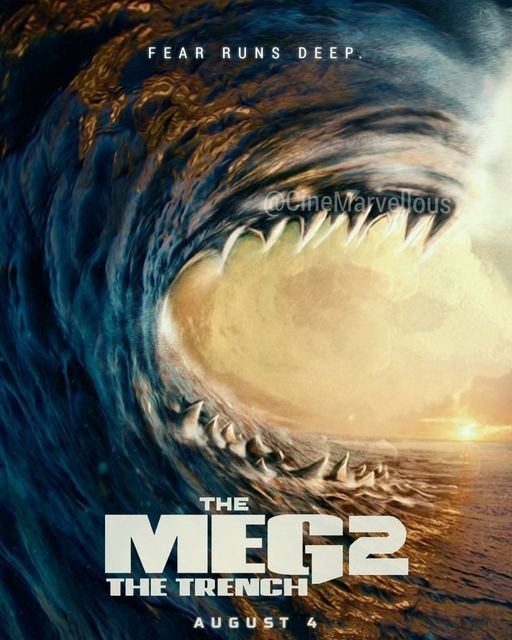Could megalodon sharks still exist today?
For millions of years, the megalodon shark reigned as the king of the ocean. With teeth the size of a human (city) hands and a body spanning up to 60 feet in length, it was the largest predatory fish to ever exist.
However, megalodon (Carcharodon megalodon) which quite literally means big tooth, has been extinct for millions of years, or has it?
In recent years, there have been reports of giant shark sightings that for some have reignited the debate over the possibility of megalodons still swimming in our oceans.
While there is no concrete evidence to support this theory, there are some who believe that the megalodon could still exist today.
The megalodon lived approximately 23 million years ago and went extinct around 2.6 million years ago during the Pliocene Epoch, its cause of extinction is still debated, but some theories include climate change, a decline in prey, or competition from other predators.
Despite this, giant shark sightings in modern times have still persisted, with one of the most famous sightings occurring in 1918. A group of sailors off the coast of South Africa claimed to have seen a massive shark that measured around 100 feet in length.
Almost 100 years later, a Discovery Channel mockumentary called "Megalodon: The Monster Shark Lives," suggested that megalodons could still exist in the ocean's depths. Despite being trailed as a fake documentary, for some it blurred lines and confused many viewers with its fake footage and photos – most notably a Meg swimming next to a German U boat in 1942 - it did raise questions about the possibility of the megalodon's survival.
So, could the megalodon still exist today? Despite a plethora of YouTube videos and click bait newspaper headlines, the short answer is no. There is no concrete evidence to support the theory that megalodons are still swimming in our oceans.
However, there are some who believe that the megalodon could have survived extinction through a process called "deep-sea gigantism."
Deep-sea gigantism is a phenomenon where creatures that live in the deep ocean grow to be much larger than their shallow-water counterparts. This is because the deep sea has a different environment and different ecological pressures, which can lead to the evolution of larger body sizes.
There are those who argue that megalodons could have evolved to survive in the deep sea and that they remain hidden from human view.
However, there are several problems with this theory. First, there is no evidence that megalodons were able to survive in the deep sea during their time on Earth.
Megalodons were coastal predators that lived in warm waters, and there is no evidence that they had the adaptations necessary to survive in the deep sea.
Additionally, the deep sea is not a hospitable environment for large creatures. The water pressure and lack of sunlight make it difficult for organisms to survive, let alone thrive.
While there are some large creatures that live in the deep sea, such as giant squid and sperm whales, they are adapted to the environment and have features that allow them to survive.
Finally, there is the issue of food. Megalodons were apex predators that fed on a variety of marine mammals and fish. There is no evidence that there is enough food in the deep sea to sustain a population of megalodons, even if they had adapted to the environment.
While there have been reports of giant shark sightings, these are misidentifications or exaggerations.
The only place it exists is within the pages of the likes of the Meg series of books by Steve Alten and films, including The Meg (2018), starring Jason Statham.
A big screen sequel, directed by Ben Wheatley, swims into view this August, with The Black Demon breaching the surface in April.
So, in many ways the extinct prehistoric shark has never been more alive.
Science tells us that megalodon is extinct. To paraphrase Matt Hooper, it probably is Martin, it probably is, but then science also told us that Coelacanths had been extinct since the Cretaceous period - cue said fish being caught and spotted several times in the 20th century.
And then there is the Megamouth shark, which was only discovered in 1976 - clearly wanting to maximise its publicity post the release of JAWS the year before.
We are constantly told that space has been explored more than our oceans and new discoveries are being made every year. Perhaps it’s wise not to take that bigger boat hire company off your speed dial just yet...
Just like the Loch Ness Monster and Bigfoot; for many, megalodon shall remain alive, swimming in the shadows, but tantalisingly just out of reach to prove that it is actually there.
And, dead or alive, that excitement about a giant monster fish is reignited each time a megalodon tooth is found on a beach – once, here be monster fish.
Words by Dean Newman
If you would like to write for The Daily Jaws, please visit our ‘work with us’ page
For all the latest Jaws, shark and shark movie news, follow The Daily Jaws on Instagram, Twitter and Facebook.






